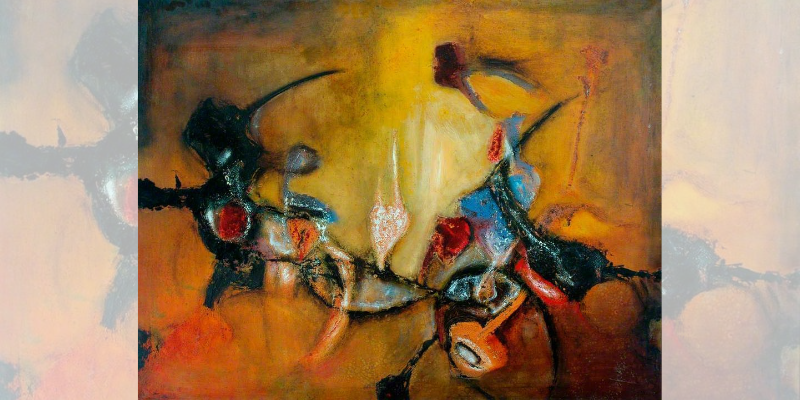
Cosmic hinterland: Aubrey Williams’s ecological vision
This event has now finished.
Room BS/005, Berrick Saul Building, Campus West, University of York (Map)
Event details
History of Art Research Seminar
In 1985, in a provocative article titled ‘Why Isn’t This Artist Hanging in the Tate?’, the London-based art critic Guy Brett first noted that the paintings of the Guyanese-British artist Aubrey Williams addressed an ‘eco-crisis’ of planetary proportions. The work of this painter, he argued, stood to ‘widen the mental horizons’ of the institutional British art world, whose track record of ‘narrow-mindedness and lack of discernment’ when dealing with Afro-diasporic artists appeared then, as it does now, especially pitiful next to Williams’s prescient engagement with the ecological challenges of the future. In retrospect, it beggars belief that Williams had to spell out the urgency of his eco-aesthetic vision. He did so eloquently in the course of an interview with Rasheed Araeen published in 1989 in Third Text, in which he expressed his dismay at what was already a cataclysmic scenario characterised by severely polluted oceans, rising carbon emissions and advancing pandemics, among other phenomena.
This seminar shows that Williams’s comments were not just derivative expressions of the green politics that emerged in the North-Atlantic world in the 1970s and 1980s and which provided the language for the ‘eco-crisis’ that Brett and others ultimately offered as an interpretative framework for his paintings. Instead, Williams’s ecological vision will be brought to bear on his formative experiences in the Guyanese hinterland, an extraordinarily biodiverse ecosystem encompassing Amazon rainforest alongside savannahs and ancient mountainous ranges punctuated by spectacular waterfalls. Variously understood as a centre of white settler extractivism, a living repository of Indigenous and counter-modern paradigms, a portal into decolonised dimensions, and a frontier of planetary survival, this majestic landscape will be shown to have directed Williams’s pictorial practice toward visionary eco-aesthetic solutions that cannot easily be reconciled with dominant varieties of ecological futurism with traction in the North-Atlantic art world.
About the speaker
Dr Giulia Smith is a Leverhulme Early Career Research Fellow at the Ruskin School of Art, University of Oxford, where she specialises in modern and contemporary art, with an emphasis on the legacies of empire in Britain and across the Atlantic world. Titled Living Landscapes: Nature as Anti-Colonial Agent in Caribbean British Art, her book project considers visual objects and literary texts mobilise geophysical entities and climatic phenomena in support of counter-hegemonic critiques of colonial and neo-colonial regimes of oppression and environmental exploitation. Preliminary publications relating to this research include an essay for the catalogue of Life Between Islands: Caribbean British Art 1950s–Now (Tate Britain). In the past Dr Smith has contributed articles to British Art Studies, Third Text, Sculpture Journal, Art History and Art Monthly. She has collaborated on exhibitions and research programmes with South London Gallery, ICA, Showroom, Wellcome Library, The Drawing Center NY and the Guggenheim Museum, among other institutions.
